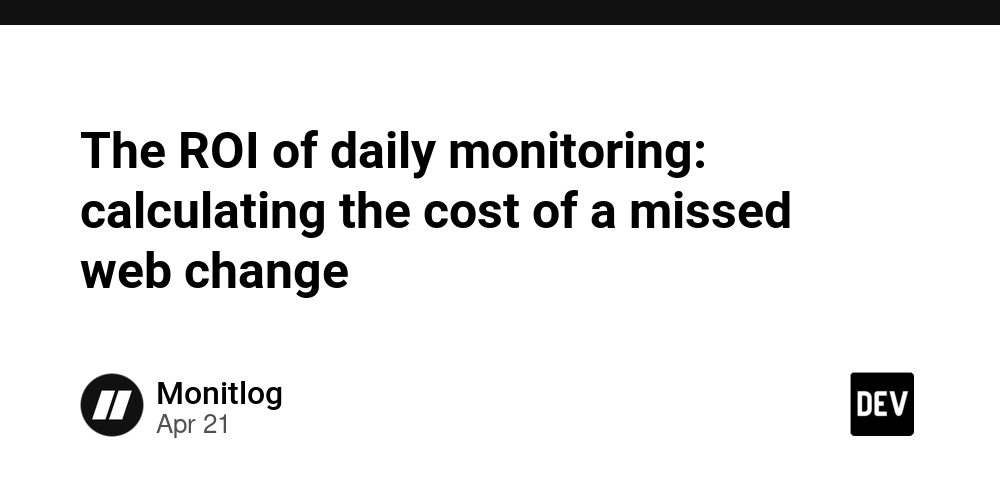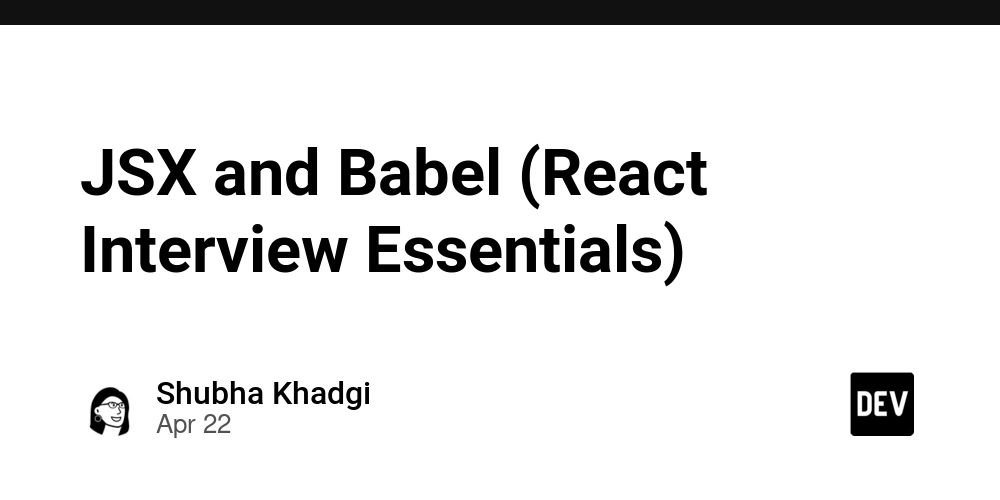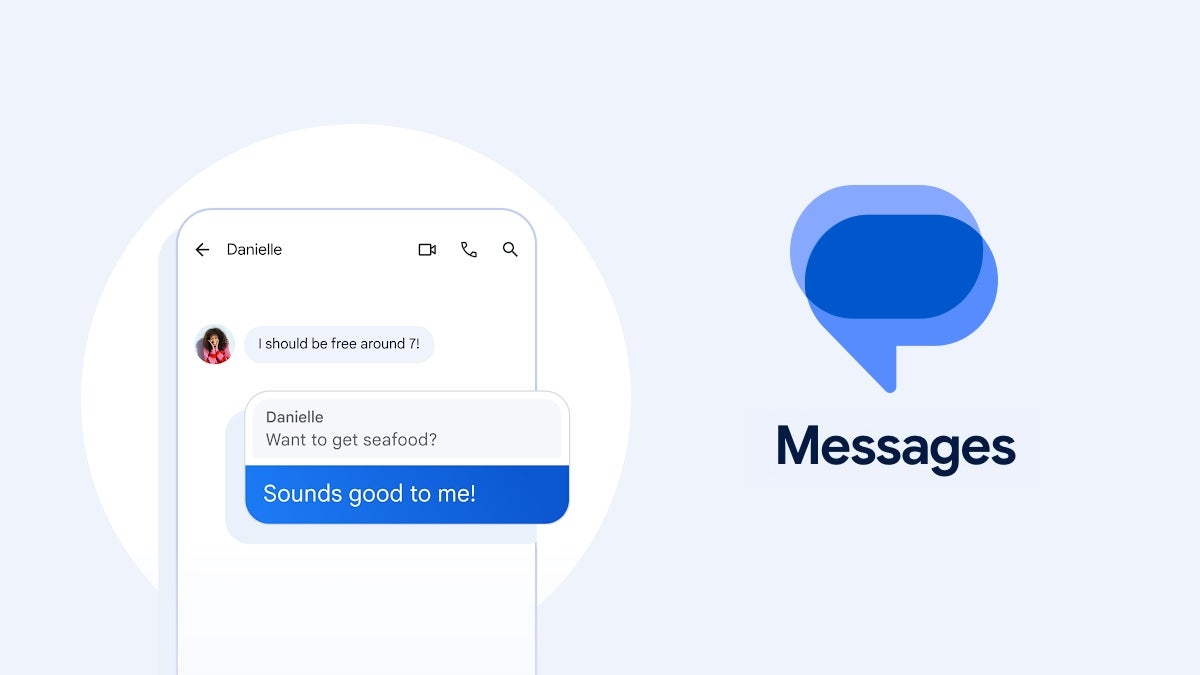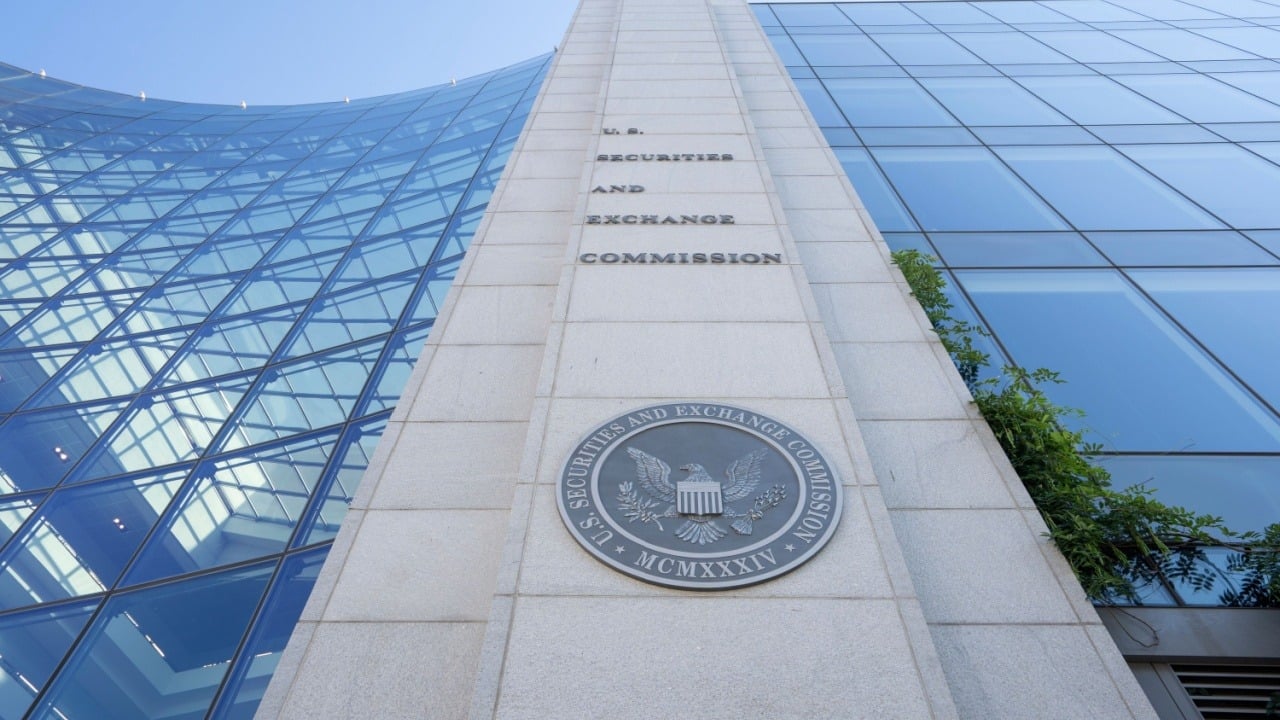The ROI of daily monitoring: calculating the cost of a missed web change
In today’s digital world, even the smallest change to a critical web page can have outsized consequences. A single altered sentence on your pricing page, a quiet update in a competitor’s feature list, or a revised compliance statement can ripple through your organization, impacting revenue, customer trust, and legal standing. Yet most teams only audit their sites monthly or quarterly, leaving valuable blind spots unaddressed. By capturing daily snapshots and delivering concise, AI‑generated summaries, you transform silent risks into immediate, actionable insights. In this article, we’ll explore the hard and soft costs of not catching web changes quickly, quantify the returns of daily monitoring, and show why a lightweight monitoring service is one of the highest‑leverage investments you can make. When a single change derails growth Imagine this: your SaaS company launches a promotion. Overnight, a copy‑editor accidentally replaces your “Start free trial” button text with “Learn more”. The next morning, your sales team is puzzled by a sudden dip in trial sign‑ups. By the time you discover the issue two weeks later during your monthly review, you’ve missed out on tens of thousands in new bookings, and lost momentum in boardroom discussions. Daily monitoring could have flagged that change within hours, allowing marketing or product managers to revert the copy before the damage compounded. Below, we break down exactly how the numbers add up when changes go unnoticed, and how automated change detection pays for itself many times over. Revenue at risk Every day your site runs with an unintended edit, prospects slip through the cracks. Visitors: Your pricing page sees 10,000 unique views per day. Baseline conversion: 6 % of visitors start a free trial or purchase. Accidental edit: Call‑to‑action text changes from “Start free trial” to “Learn more”. Impact window: 24 hours until your next scheduled check. Expected sign‑ups: 10,000 × 6 % = 600 Actual sign‑ups: 10,000 × 1 % = 100 Missed sign‑ups: 600 – 100 = 500 Average lifetime value (LTV) per user: $40 Revenue lost per day: 500 × $40 = $20,000 If uncorrected for 30 days, you could lose $600,000, more than the annual cost of most monitoring subscriptions. A morning alert after a daily snapshot would limit that loss, making your subscription cost minimal by comparison. Competitive blind spots Staying ahead of the competition means knowing when they shift their offerings, adjust pricing, or roll out new features. Even subtle changes can tip buyer perceptions: Price adjustments: A rival trimming $10 off their entry tier may seem minor, but 83 % of B2B buyers say price is a top consideration when choosing a vendor. Feature roll‑outs: Adding “advanced analytics included” to their product page can instantly shift the value proposition in their favor. By the time a monthly audit catches these updates, every prospect call, live demo, or marketing campaign has been operating with stale intel, potentially costing you deals. A concise alert such as “Competitor X lowered their basic plan from $99 to $89” lands in your inbox before the first pipeline meeting. Armed with that insight, your teams can update sales scripts, adjust your own offers, or launch targeted promotions without missing a beat. Compliance and legal exposure Regulatory requirements and terms of service pages can change quietly, but the stakes are high: Privacy disclosures (GDPR, CCPA, ePrivacy): Failure to surface a new “data retention” clause can lead to fines of up to 4 % of annual global turnover under GDPR. Subscription renewals and cancellation terms: If your terms don’t clearly articulate “how to cancel,” you risk charge‑backs and customer disputes. Accessibility statements: Updated WCAG guidelines may require new language affirming compliance levels. Regulators often assume willful ignorance if you can’t demonstrate timely review of your published policies. Weeks of non‑compliance translate to legal fees, regulatory notices, and potential class‑action suits. Timestamped text snapshots create an immutable audit trail, proving you reviewed and acknowledged every change, dramatically reducing legal exposure. Hidden operational costs Silent web changes can quietly drain your team’s resources and morale: Fire‑fighting time: Investigating unexplained traffic drops can take hours, diverting engineers from strategic work. Ad budget waste: A flawed landing page running unchecked burns through paid‑traffic spend. A swift morning alert means your team spends minutes reverting a typo instead of hours diagnosing root causes, keeping campaigns on target and morale high. What you need (and nothing you don’t) Most organizations don’t need a heavy analytics platform, just the essentials: Daily snapshots for your most critical URLs, balancing vigilance with minimal noise. AI‑generated, plain‑

In today’s digital world, even the smallest change to a critical web page can have outsized consequences. A single altered sentence on your pricing page, a quiet update in a competitor’s feature list, or a revised compliance statement can ripple through your organization, impacting revenue, customer trust, and legal standing. Yet most teams only audit their sites monthly or quarterly, leaving valuable blind spots unaddressed.
By capturing daily snapshots and delivering concise, AI‑generated summaries, you transform silent risks into immediate, actionable insights. In this article, we’ll explore the hard and soft costs of not catching web changes quickly, quantify the returns of daily monitoring, and show why a lightweight monitoring service is one of the highest‑leverage investments you can make.
When a single change derails growth
Imagine this: your SaaS company launches a promotion. Overnight, a copy‑editor accidentally replaces your “Start free trial” button text with “Learn more”. The next morning, your sales team is puzzled by a sudden dip in trial sign‑ups. By the time you discover the issue two weeks later during your monthly review, you’ve missed out on tens of thousands in new bookings, and lost momentum in boardroom discussions.
Daily monitoring could have flagged that change within hours, allowing marketing or product managers to revert the copy before the damage compounded. Below, we break down exactly how the numbers add up when changes go unnoticed, and how automated change detection pays for itself many times over.
Revenue at risk
Every day your site runs with an unintended edit, prospects slip through the cracks.
- Visitors: Your pricing page sees 10,000 unique views per day.
- Baseline conversion: 6 % of visitors start a free trial or purchase.
- Accidental edit: Call‑to‑action text changes from “Start free trial” to “Learn more”.
- Impact window: 24 hours until your next scheduled check.
Expected sign‑ups: 10,000 × 6 % = 600
Actual sign‑ups: 10,000 × 1 % = 100
Missed sign‑ups: 600 – 100 = 500
Average lifetime value (LTV) per user: $40
Revenue lost per day: 500 × $40 = $20,000
If uncorrected for 30 days, you could lose $600,000, more than the annual cost of most monitoring subscriptions. A morning alert after a daily snapshot would limit that loss, making your subscription cost minimal by comparison.
Competitive blind spots
Staying ahead of the competition means knowing when they shift their offerings, adjust pricing, or roll out new features. Even subtle changes can tip buyer perceptions:
- Price adjustments: A rival trimming $10 off their entry tier may seem minor, but 83 % of B2B buyers say price is a top consideration when choosing a vendor.
- Feature roll‑outs: Adding “advanced analytics included” to their product page can instantly shift the value proposition in their favor.
By the time a monthly audit catches these updates, every prospect call, live demo, or marketing campaign has been operating with stale intel, potentially costing you deals.
A concise alert such as “Competitor X lowered their basic plan from $99 to $89” lands in your inbox before the first pipeline meeting. Armed with that insight, your teams can update sales scripts, adjust your own offers, or launch targeted promotions without missing a beat.
Compliance and legal exposure
Regulatory requirements and terms of service pages can change quietly, but the stakes are high:
- Privacy disclosures (GDPR, CCPA, ePrivacy): Failure to surface a new “data retention” clause can lead to fines of up to 4 % of annual global turnover under GDPR.
- Subscription renewals and cancellation terms: If your terms don’t clearly articulate “how to cancel,” you risk charge‑backs and customer disputes.
- Accessibility statements: Updated WCAG guidelines may require new language affirming compliance levels.
Regulators often assume willful ignorance if you can’t demonstrate timely review of your published policies. Weeks of non‑compliance translate to legal fees, regulatory notices, and potential class‑action suits.
Timestamped text snapshots create an immutable audit trail, proving you reviewed and acknowledged every change, dramatically reducing legal exposure.
Hidden operational costs
Silent web changes can quietly drain your team’s resources and morale:
- Fire‑fighting time: Investigating unexplained traffic drops can take hours, diverting engineers from strategic work.
- Ad budget waste: A flawed landing page running unchecked burns through paid‑traffic spend.
A swift morning alert means your team spends minutes reverting a typo instead of hours diagnosing root causes, keeping campaigns on target and morale high.
What you need (and nothing you don’t)
Most organizations don’t need a heavy analytics platform, just the essentials:
- Daily snapshots for your most critical URLs, balancing vigilance with minimal noise.
- AI‑generated, plain‑language summaries that highlight exactly what changed and why it matters.
- Flexible delivery via email or SMS, fitting seamlessly into morning stand‑ups or urgent mobile alerts.
This lean approach avoids time‑sinks in complex dashboards and delivers only the insights you need to act immediately.
Quick ROI estimator
You can quantify your potential savings with a simple formula:
Annual savings = (Number of critical incidents prevented × Average revenue protected per incident) − Annual monitoring cost
For example, preventing four critical incidents per year, each protecting $20,000 in revenue, against an annual monitoring cost of $3,000 yields:
(4 × $20,000) − $3,000 = $77,000
Even a single prevented incident in a slow quarter covers an entire year’s subscription, with each additional incident delivering pure upside.
Monitoring web page changes drive real outcomes, good or bad, for your business, from immediate revenue impact to long‑term brand equity and legal safety. By implementing a daily monitoring routine with AI-generated summaries, you move from reactive firefighting to proactive oversight, reacting in hours instead of weeks.









































































































































































![[The AI Show Episode 144]: ChatGPT’s New Memory, Shopify CEO’s Leaked “AI First” Memo, Google Cloud Next Releases, o3 and o4-mini Coming Soon & Llama 4’s Rocky Launch](https://www.marketingaiinstitute.com/hubfs/ep%20144%20cover.png)



































































































































![From fast food worker to cybersecurity engineer with Tae'lur Alexis [Podcast #169]](https://cdn.hashnode.com/res/hashnode/image/upload/v1745242807605/8a6cf71c-144f-4c91-9532-62d7c92c0f65.png?#)























![BPMN-procesmodellering [closed]](https://i.sstatic.net/l7l8q49F.png)



















































































.jpg?#)
.jpg?#)
.jpg?#)

































































































































![CarPlay app with web browser for streaming video hits App Store [U]](https://i0.wp.com/9to5mac.com/wp-content/uploads/sites/6/2024/11/carplay-apple.jpeg?resize=1200%2C628&quality=82&strip=all&ssl=1)
![What’s new in Android’s April 2025 Google System Updates [U: 4/21]](https://i0.wp.com/9to5google.com/wp-content/uploads/sites/4/2025/01/google-play-services-3.jpg?resize=1200%2C628&quality=82&strip=all&ssl=1)













![Apple Releases iOS 18.5 Beta 3 and iPadOS 18.5 Beta 3 [Download]](https://www.iclarified.com/images/news/97076/97076/97076-640.jpg)
![Apple Seeds visionOS 2.5 Beta 3 to Developers [Download]](https://www.iclarified.com/images/news/97077/97077/97077-640.jpg)
![Apple Seeds tvOS 18.5 Beta 3 to Developers [Download]](https://www.iclarified.com/images/news/97078/97078/97078-640.jpg)
![Apple Seeds watchOS 11.5 Beta 3 to Developers [Download]](https://www.iclarified.com/images/news/97079/97079/97079-640.jpg)
































































































































